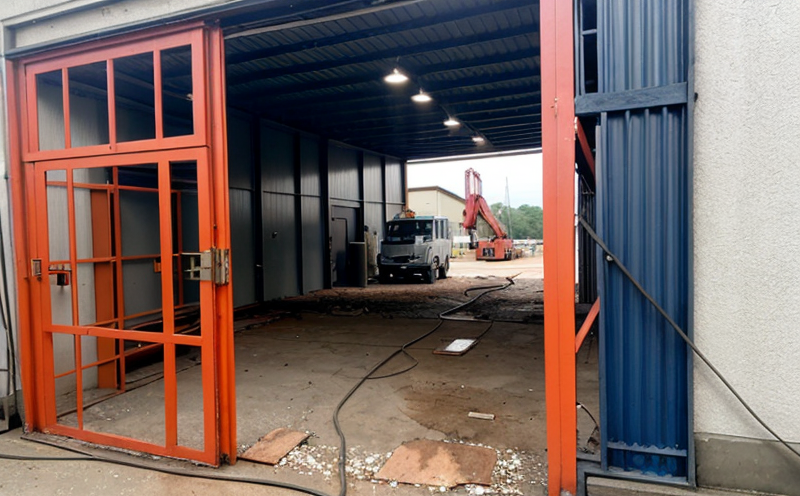Operational safety inspection
In today’s complex industrial landscapes, ensuring operational safety is paramount. Equipment Inspection in general, and Operational Safety Inspection specifically, plays a critical role in safeguarding personnel and assets across various sectors such as manufacturing, construction, and transportation.
The primary objective of an Operational Safety Inspection is to ensure that equipment is functioning within safe parameters, thereby minimizing the risk of accidents, failures, and downtime. This service involves a detailed assessment of machinery and systems to identify potential hazards or areas requiring attention before they lead to catastrophic failure.
The scope of this inspection extends beyond mere visual checks; it encompasses a comprehensive evaluation using advanced instrumentation and techniques. Our team employs international standards like ISO 9001, ASME (American Society of Mechanical Engineers), and OSHA guidelines to ensure that the inspections are thorough and in compliance with regulatory requirements.
A typical Operational Safety Inspection involves several key phases:
- Preparation: Documentation review, equipment history evaluation, and personnel briefing.
- Equipment Preparation: Ensuring the equipment is in a state suitable for inspection, often involving cleaning or pre-operation checks.
- Inspection: Utilizing non-destructive testing (NDT) methods such as ultrasonic testing and radiography to assess integrity and detect flaws. We also conduct visual inspections, thermal imaging, and vibration analysis.
- Data Analysis: Interpretation of results from all tests conducted during the inspection process.
- Reporting: Compilation of a detailed report outlining findings, recommendations for corrective actions, and compliance status with relevant standards.
The ultimate goal is to ensure that equipment not only meets operational demands but also adheres to stringent safety protocols. This approach helps in maintaining high levels of reliability and efficiency while minimizing risk.
Benefits
An Operational Safety Inspection offers numerous advantages, making it an essential component of any robust equipment management strategy:
- Enhanced Equipment Life: By identifying and addressing potential issues early, the lifespan of machinery is significantly extended.
- Increased Operational Efficiency: Reduced downtime due to planned maintenance instead of reactive repairs.
- Better Safety Standards Compliance: Ensures that all equipment adheres to legal and regulatory requirements, thereby avoiding penalties and fines.
- Risk Mitigation: Identification and elimination of potential hazards before they escalate into major incidents.
- Cost Savings: Prevention of costly repairs and replacements by addressing issues proactively rather than reactively.
- Improved Reputation: Demonstrating a commitment to safety and compliance enhances the company’s reputation among clients and stakeholders.
The benefits extend beyond immediate operational improvements. By conducting regular inspections, organizations can establish a culture of continuous improvement and proactive management, which is vital for long-term sustainability and growth.
Quality and Reliability Assurance
At the heart of our Operational Safety Inspection service lies a commitment to delivering high-quality results. We employ state-of-the-art technology, including advanced imaging systems, thermal cameras, and sophisticated data analysis software, ensuring that every aspect of equipment performance is meticulously assessed.
Our inspections are guided by rigorous quality assurance protocols based on international standards such as ASME Section VIII, ISO 10856 for pressure vessels, and EN 376-2 for industrial boilers. These standards provide a benchmark for excellence in the field of equipment inspection.
The process begins with thorough preparation, where we review all relevant documentation to gain an understanding of the equipment’s history and past performance. This information is crucial in tailoring our approach to each specific piece of machinery or system. During the inspection phase, we utilize a variety of techniques tailored to the nature of the equipment:
- Non-Destructive Testing (NDT): Ensures that no harm comes to the equipment during testing.
- Thermal Imaging: Detects anomalies in heat distribution which could indicate potential issues.
- Vibration Analysis: Identifies operational inefficiencies or structural weaknesses through vibration patterns.
Data from these tests is meticulously analyzed, and our reports are designed to provide actionable insights. Recommendations for maintenance or replacement are always aligned with the best interests of safety and reliability.
Our dedication to quality assurance extends beyond just conducting inspections; we also offer training programs to help clients understand the importance of regular equipment checks and how they can implement similar practices in their own organizations.
Use Cases and Application Examples
| Equipment Type | Description | Inspection Focus |
|---|---|---|
| Pressure Vessels | Large containers used to store and transport compressed gases or liquids. | Material integrity, weld quality, and thermal performance are inspected using ultrasonic testing and radiography. |
| Bridges | Structural components of transportation networks that must withstand heavy loads and environmental stresses. | Visual inspections for corrosion, non-destructive testing to check internal integrity, and monitoring for fatigue cracks. |
| Motors | Pieces of equipment converting electrical energy into mechanical power. | Vibration analysis, thermal imaging, and insulation resistance checks to ensure optimal performance and prevent overheating. |
| Boilers | Devices that produce hot water or steam for industrial processes. | Visual inspections, hydrostatic testing, and acoustic emission monitoring to detect potential leaks or failures. |
The versatility of our Operational Safety Inspection service means it can be applied across a wide range of industries. For instance, in the manufacturing sector, regular inspections help maintain productivity by preventing unexpected breakdowns. In transportation, they ensure that critical infrastructure like bridges and tunnels remains safe for public use.
The examples provided demonstrate how our services are tailored to specific equipment types and applications. By offering this level of customization, we ensure that each inspection is as effective as possible in identifying potential risks and ensuring safety and reliability.





